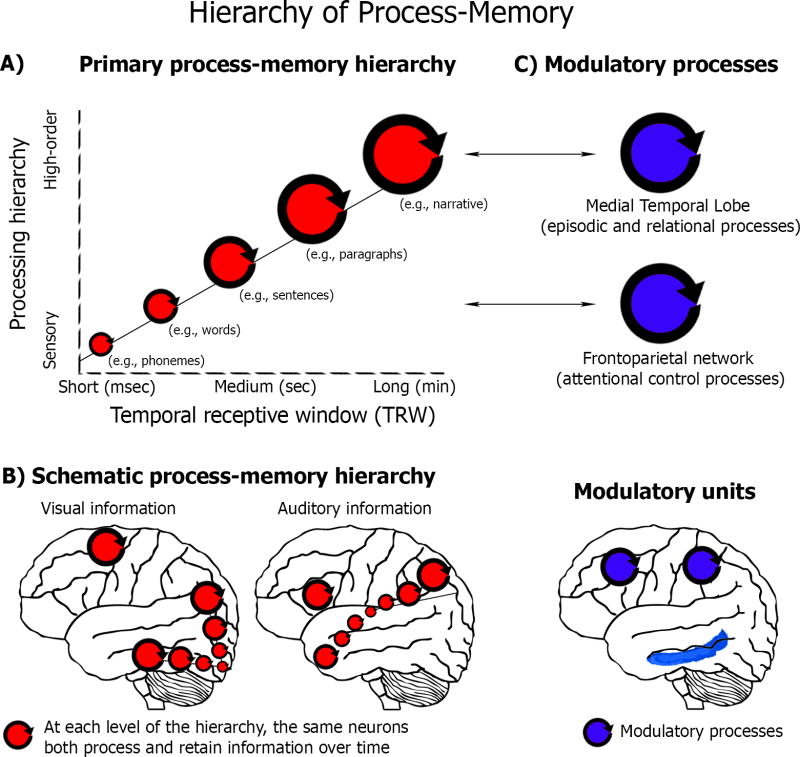Figure 2.
A) A hierarchy of process memory framework. Memory is integral to the operation of each cortical area and there is no separation between the processing units and information storage units. Furthermore, the processing timescale (operationalized by measuring each region’s temporal receptive window [TRW]) increases in a topographically organized manner, from milliseconds in early sensory areas up to minutes in high-order areas. B) A schematic process memory hierarchy for auditory and visual stimulation (for actual data see Figures 3–4 and ref [39]). C) Primary vs. modulatory process memory. Two additional processes (blue circles) modulate the primary process memories (red circles) that are located along the hierarchy: attentional control processes (e.g., fronto-parietal network interactions with short-TRW linguistic regions could enable maintenance of a target word across a delay period) and episodic memory processes (e.g., MTL/hippocampal interactions, most likely with long-TRW regions such as retrosplenial cortex, could enable reactivation of an autobiographical episode).

